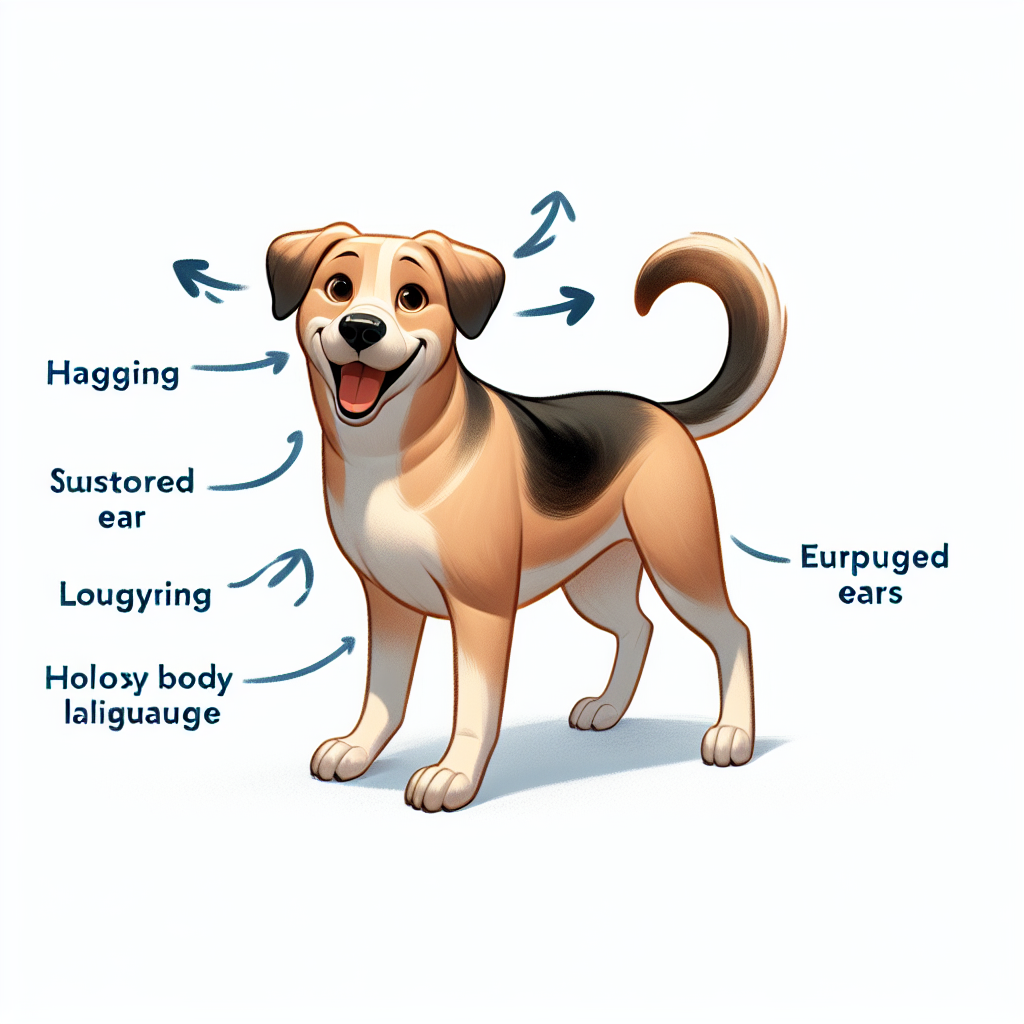The Flea Dilemma: Understanding the Problem

Fleas are tiny, but boy, can they cause a big mess. These pesky critters can turn your happy home into a battleground. If you’ve ever dealt with a flea infestation, you know the struggle. Fleas aren’t just annoying; they can make life downright miserable for you and your pets. They bite, they itch, and they somehow multiply faster than you can say “how to kill fleas.”
But let’s not get ahead of ourselves. The first step in tackling any problem is understanding it, right? So, what’s the deal with these fleas? Well, for starters, they love to hitch rides on your pets. Think of them as unwanted hitchhikers, always looking for a free ride and a warm place to stay. Once they’re in your home, they lay eggs like it’s going out of style. Flea infestation signs can be subtle at first. Maybe your dog is scratching a bit more than usual, or you notice tiny black specks on your cat’s bedding. Those specks? Yep, flea dirt.
Understanding the flea life cycle is key. Fleas go from egg to larva to pupa to adult. And here’s the kicker: they can stay in that pupa stage for weeks until the conditions are just right. It’s like they’re waiting for the perfect moment to strike. And when they do, they can turn your life upside down.
Spotting the Culprits: Identifying Fleas in Your Home
So, how do you go about identifying these unwelcome guests? It’s not as hard as you might think. Fleas are tiny, but they’re not invisible. Start by checking your pets. Look for flea dirt, which looks like little pepper flakes. A flea comb can be your best friend here. Run it through your pet’s fur and see if you catch any little jumpers.
But it’s not just about your furry friends. Fleas love to hide in your home too. Pay attention to your carpet, bedding, and furniture. If you suspect fleas, grab a white sock and walk around your house. Fleas are attracted to white, and if they’re around, they’ll jump on your sock in no time. It’s a simple trick, but it works.
And don’t forget to check the places your pets love to hang out. Fleas are sneaky, and they’ll hide in any dark corner they can find. Knowing how to identify fleas is half the battle. Once you’ve spotted them, you can start planning your attack.
The First Step: Treating Your Pets for Fleas
Alright, so you’ve found the little buggers. Now what? The first step in how to kill fleas is treating your pets. They’re the ones carrying these pests, after all. There are tons of options out there, and it can be overwhelming. But don’t worry, I’ve been there. Here’s what I’ve learned over the years.
When it comes to the best flea treatment for pets, you’ve got choices. There’s topical treatments, oral medications, and even collars. Some folks swear by natural flea control methods, like essential oils or apple cider vinegar. But be careful with those. Not all natural remedies are safe for pets.
One time, I tried a homemade flea spray on my dog, Max. Let’s just say he wasn’t a fan, and neither was I after the smell lingered for days. Lesson learned: always check with your vet before trying something new. They can point you in the right direction and help you find a treatment that works for your pet’s specific needs.
Whatever you choose, consistency is key. Fleas are persistent little creatures, and it might take a couple of rounds to get rid of them for good. Stick with it, and don’t lose hope.
Cleaning House: Ridding Your Home of Fleas
Now that your pets are on the road to being flea-free, it’s time to tackle your home. This is where things can get a bit intense, but hang in there. It’s time to roll up your sleeves and get to work. Knowing how to clean fleas from house is crucial.
Start with a good vacuum. And I mean a really good one. Fleas love to hide in carpets and upholstery, so vacuum every nook and cranny. Don’t forget to empty the vacuum bag outside; the last thing you want is fleas crawling back out.
Next, wash everything. Bedding, pet toys, clothes—if it can go in the wash, throw it in. Use hot water to kill any fleas or eggs hiding in the fabric. And hey, while you’re at it, consider using some flea spray on your furniture and carpets. There are plenty of home remedies for fleas that can help here. Some folks use a mixture of water and lemon juice, while others rely on commercial sprays.
One thing that helped me was diatomaceous earth. It’s a natural powder that kills fleas by drying them out. Just sprinkle it on your carpets, let it sit for a day, and then vacuum it up. It’s safe and effective, but be sure to use food-grade quality.
Tips from the Trenches: Real-Life Solutions from Pet Owners
Over the years, I’ve picked up some pet owners flea removal tips that have made a world of difference. These are tried and true methods from folks who’ve been in the trenches and lived to tell the tale.
One of my friends, Sarah, swears by a simple routine. She treats her pets every month without fail and vacuums daily during flea season. Yes, daily. It’s a commitment, but it’s kept her home flea-free for years.
Then there’s Mike, who uses a flea collar for his dog and follows up with regular baths. He’s got a special shampoo that works wonders and leaves his pup smelling great. He told me once that the trick is consistency and not waiting until the problem gets out of hand.
And let’s not forget about the power of prevention. Keeping your yard tidy and trimmed can make a big difference. Fleas love tall grass and shady spots, so keep things neat to discourage them from setting up camp.
So, there you have it. Fleas might be tiny, but with a little determination and a lot of elbow grease, you can get rid of them. Don’t let these little pests get you down. With the right tools and mindset, you’ll be saying goodbye to fleas in no time. Thanks for sticking with me through all this. You’ve got this!
Natural Remedies for Flea Control
Hey there, pet lovers! So, you’re knee-deep in a flea situation, huh? Trust me, I’ve been there, and I know it’s no walk in the park. But before you raid the local pet store, let’s talk about natural flea remedies for pets. You know, those tried-and-true methods that your Grandma used to swear by. There’s something comforting about going old-school, isn’t there?
First up, let’s chat about diatomaceous earth. It sounds fancy, but it’s really just a type of powder made from tiny, crushed-up fossils. Sprinkle this on your pet’s fur, and it works like a charm. The fleas don’t stand a chance against those tiny sharp edges. Just be sure you’re using food-grade diatomaceous earth, okay? We don’t want to harm our furry friends.
Then there’s the magic of apple cider vinegar. It’s not just for your salad dressing, folks. Mix a little in your pet’s water or make a diluted spray to spritz on their coat. The fleas hate the smell and taste of it. It’s like they’re allergic to the stuff!
Oh, and don’t forget about good ol’ neem oil. Rub a bit of this on your pet’s fur, and those fleas will be packing their bags. It’s natural, safe, and it smells pretty decent too. Plus, it’s like a spa treatment for your pet’s skin. Win-win!
Over-the-Counter Treatments: Do They Work?
Now, let’s talk about those shiny boxes sitting on the shelves at your local store. You know the ones I mean. Over-the-counter flea treatments promise the world, but do they really deliver? Well, it depends. The best flea treatments over the counter can be hit or miss.
I’ve had some friends swear by certain brands. They’re like, “Jackie, it was a lifesaver!” But others? Not so much. Some treatments do a good job at killing the fleas but don’t stop the eggs from hatching. So, you’re back to square one in a week or two.
The key here is to look for products with ingredients like fipronil or imidacloprid. These are tried-and-tested warriors in the flea-fighting arena. But be careful, folks. Read the labels and follow the instructions. We don’t want to overdo it and harm our pets.
Also, keep in mind that these treatments can be a bit rough on your wallet. Some can cost around $50 or more, depending on the brand and size. If it works, it’s worth every penny, but if not, well, that’s a chunk of change down the drain, ain’t it?
Cleaning Your Home to Keep Fleas Away
Alright, folks, it’s time to roll up those sleeves. Once you’ve tackled the fleas on your pet, you’ve got to make sure they’re not hiding out in your house. Learning how to clean house after flea infestation is crucial. Trust me, you don’t want to skip this step.
Start by vacuuming like there’s no tomorrow. Fleas love to hide in carpets, rugs, and upholstery. Vacuum every nook and cranny, and don’t forget to toss the vacuum bag right after. Otherwise, those little buggers might just crawl back out.
Then, it’s time for laundry day. Wash your pet’s bedding and any blankets or cushions they like to lounge on. Hot water is your best friend here. It’s like kryptonite for fleas.
Also, consider using a steam cleaner. The heat can help kill fleas and their eggs in one fell swoop. It’s a bit of a workout, but boy, is it effective!
Outdoor Flea Prevention Tactics
Now, let’s step outside, shall we? Fleas love the great outdoors, and if you’re not careful, they’ll hitch a ride right back inside. So, what can you do?
First, let’s talk about outdoor flea prevention methods. Keep your grass short and your yard tidy. Fleas thrive in tall grass and clutter. It’s like their version of a luxury resort.
You might also want to consider using cedar chips in your garden. Fleas hate cedar, and it’s a natural way to keep them at bay. Just sprinkle them around your yard, and you’re good to go.
Oh, and those flea-repellent plants? They’re not just for show. Plants like lavender, rosemary, and mint can help keep fleas away. Plus, they make your garden smell amazing!
When to Call the Professionals
So, you’ve tried it all, and those fleas are still hanging around like unwanted guests. It might be time to call in the cavalry. Professional flea extermination services can be a godsend.
These folks know how to kill fleas and make sure they don’t come back. They’ve got the tools and expertise to tackle even the toughest infestations. It might sting a bit to shell out the cash, but sometimes, you’ve just got to let the pros handle it.
Prices can vary, but you’re looking at anywhere from $100 to $300 for a full treatment. It’s not cheap, but when you weigh it against the stress and hassle of dealing with a persistent flea problem, it might just be worth it.
Remember, you’re not alone in this battle against fleas. You’ve got tools, tricks, and a whole community of pet lovers ready to support you. Thanks for hanging out with me today, and go get those fleas! You’ve got this!
Home Remedies for Fleas: What Really Works
Alright, folks, gather ’round. Let’s chat about those pesky fleas and how to deal with them using home remedies. You know, the kind of stuff you can whip up with things lying around the house. Now, I get it. You’re probably wondering if these home remedies for fleas actually work or if they’re just old wives’ tales. Well, let me tell you, some of them have been pretty effective in my experience.
One of my go-tos is a mixture of vinegar and water. It’s cheap and easy. Just mix equal parts in a spray bottle and go to town on your pet’s fur and around your home. The smell alone might send those fleas packing. Another trick? Salt. Yep, you heard me right. Sprinkle it on your carpets and leave it for a couple of days before vacuuming. The salt dries out the fleas and their eggs, making it a simple yet effective method.
Then, there’s the good ol’ dish soap trap. Fill a shallow bowl with water and a squirt of dish soap, and place it under a nightlight. Fleas are attracted to the light and jump into the soapy water, meeting their demise. It’s like setting a trap but without the hassle of complicated contraptions.
The Role of Flea Collars: Friend or Foe?
Now, let’s talk about flea collars. Are they really your pet’s best buddy, or just another gimmick to drain your wallet? I’ve been in the pet industry long enough to see both sides of the coin. Some swear by the best flea collars for dogs, while others think they’re a waste of time.
On the pro side, flea collars can provide continuous protection. They’re easy to use and can last for months. But, not all collars are created equal. You’ve got to be picky about the brand and type. Some cheaper options might not be as effective, and you don’t want to skimp when it comes to your furry friend’s health.
But here’s the kicker: flea collars aren’t a magic solution. They’re part of a bigger puzzle. If you’ve got a persistent flea problem, relying solely on a collar won’t cut it. You’ve got to mix it up with other methods to really keep those fleas at bay.
Understanding the Flea Lifecycle: Timing is Everything
Ah, the flea lifecycle. It’s like a bad movie that never ends if you don’t know how to tackle it. Timing is everything, folks. If you miss a stage, you’re back to square one, and trust me, nobody wants that.
Let’s break it down. There are four flea lifecycle stages: egg, larva, pupa, and adult. Each stage requires a different approach. Eggs are sneaky, hiding in carpets and bedding. Regular cleaning can help disrupt their party. Larvae are hungry little critters, feeding on organic matter. Keeping things clean and dry can mess up their buffet plans.
Now, pupae are the tough nuts. They’re in cocoons, waiting for the perfect moment to hatch. This is where timing really matters. If you don’t catch them before they become adults, it’s game over. Understanding these stages helps you plan your attack and not waste time on futile efforts.
Essential Oils and Fleas: A Natural Approach
Now, let’s dabble into the world of essential oils. Who’d have thought that a little bottle of oil could be your ally in the battle against fleas? It’s a natural approach, and some folks swear by it.
Essential oils for flea control, like lavender, cedarwood, or lemon, can be mixed with water and sprayed onto your pet’s coat or around your home. They smell great and can act as a deterrent. But, and this is a big but, not all oils are safe for pets. You’ve got to do your homework and make sure you’re using pet-friendly options.
I remember trying lavender oil on my own dog, and it worked like a charm. Not only did it help with the fleas, but my pooch smelled like a day at the spa. It’s a win-win if you ask me. Just remember, natural flea treatment methods require patience and consistency. They’re not instant fixes, but they can be part of a holistic approach to flea control.
Wrapping It Up: Staying Persistent and Vigilant
Alright, folks, we’re on the home stretch. Wrapping it up, it’s all about staying persistent and vigilant. Fleas are pesky little critters, and they don’t give up easy. But neither do we, right? With a little grit and determination, you can keep them at bay.
It’s not just about one magic solution. It’s a combination of everything we’ve talked about. Mix and match home remedies, the best flea collars for dogs, and essential oils for flea control. And don’t forget to keep a keen eye on the flea lifecycle stages. Timing is your best friend in this fight.
Remember, you’re not alone in this. We’ve all been there, and with the right tools and mindset, you can win the battle against fleas. Thanks for sticking with me till the end. You’re armed with knowledge now, so go get those fleas. You’ve got this!
Quick Takeaways:
Alright, let’s get down to brass tacks about how to kill fleas. If you’ve ever been through a flea infestation, you know it’s not a walk in the park. First, it’s crucial to spot those flea infestation signs early. Look for your pets scratching like there’s no tomorrow or tiny black specks peppering their bedding. Once you’ve figured out how to identify fleas, it’s time to act.
For your furry pals, the best flea treatment for pets could be a game-changer. There are plenty of over-the-counter options, but sometimes home remedies for fleas can work wonders too. A good flea comb is your ally—use it daily to trap and remove those pesky critters.
Inside the house, it’s time to roll up your sleeves. How to clean fleas from the house? Vacuum like there’s no tomorrow, especially in dark corners where they love to hide. Wash your pet’s bedding in hot water, and don’t hold back on using a steam cleaner if you have one.
Don’t forget about outdoor flea prevention methods. Keep your lawn trimmed and use natural flea control methods like diatomaceous earth around common hotspots. And, if the going gets tough, don’t hesitate to call in professional flea extermination services. They’ve got the gear and the know-how to help you out.
Remember, persistence is key. Stay vigilant, keep up the routine, and you’ll soon show those fleas the door.
FAQs:
1. How can I tell if I have a flea infestation?
Flea infestation signs are sneaky. If your pet is scratching more than usual or you notice tiny red bumps on your ankles, you might have uninvited guests. Check for flea dirt—those little black specks—in your pet’s bedding or your carpet. A flea comb can also help you find and remove these critters.
2. What are some home remedies for fleas on pets?
Good question! Natural flea remedies for pets can be quite effective. Try a mixture of apple cider vinegar and water as a spray. It doesn’t kill fleas but can help repel them. Adding a bit of brewer’s yeast to your pet’s diet might also make them less appetizing to fleas. But remember, always consult your vet when trying new treatments.
3. What’s the best way to clean my house after a flea infestation?
How to clean house after flea infestation involves a full-on attack. Vacuum every nook and cranny, wash all pet bedding in hot water, and consider using a steam cleaner. Don’t forget to empty your vacuum outside to prevent re-infestation. You might also want to use a flea spray on carpets and furniture.
4. How can I kill fleas in my yard?
Outdoor flea prevention methods include keeping your grass short and removing any debris where fleas love to hide. You can use beneficial nematodes, which are tiny worms that kill fleas in their larval stages. Diatomaceous earth is another natural option; sprinkle it around your yard to dry out and kill fleas.
5. What’s the best flea treatment over the counter?
When it comes to the best flea treatments over the counter, it depends on your pet and your preference. Frontline and Advantage are popular choices that many pet owners swear by. They’re easy to apply and start working fast. But remember, each pet is different, so what works for one might not work for another.
Conclusion:
So, there you have it, folks. Killing fleas is about determination and using the right tools. Whether you’re leaning on home remedies, the best flea treatment for pets, or calling in professional flea extermination services, you’ve got options. The key is to act fast and stay the course. Fleas might be tiny, but they’re tough. With persistence, though, you can win the battle.
And hey, you’re not alone in this. We’ve all been there, and it takes a bit of grit to get through it. But you’ve got the know-how now, and you’re ready to tackle those fleas head-on. So, roll up those sleeves, get to work, and soon enough, you’ll have your home—and your pets—flea-free. Thanks for sticking with me, and good luck!
References:
1. [Healthline – How to Get Rid of Fleas](https://www.healthline.com/health/healthy-home-guide/how-to-get-rid-of-fleas)
2. [WebMD – Remove Fleas from Pet](https://www.webmd.com/pets/remove-fleas-from-pet)
3. [CDC – Fleas](https://www.cdc.gov/fleas/section-name/index.html)
4. [Harvard Health – How to Get Rid of Fleas: Protecting Your Home and Pets](https://www.health.harvard.edu/staying-healthy/how-to-get-rid-of-fleas-protecting-your-home-and-pets)
Our solution eradicates fleas on contact without harmful chemicals, ensuring a safe environment for your pets and family. Easy to use and highly effective, SayByeBugs helps you maintain a flea-free home. Learn more and order today at SayByeBugs.com






